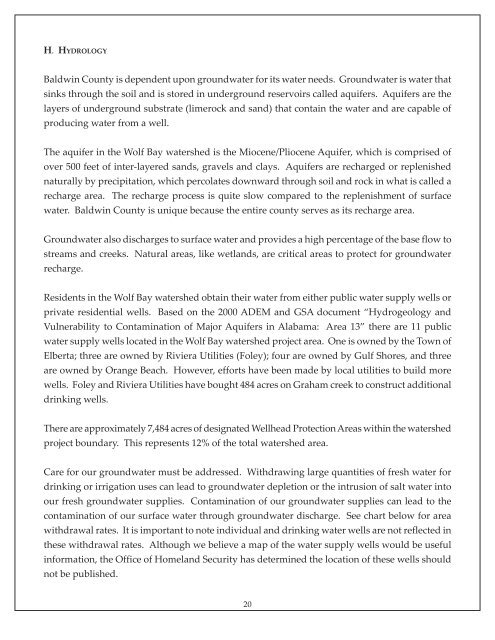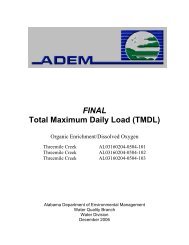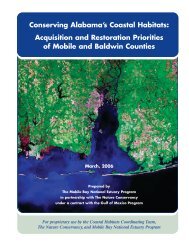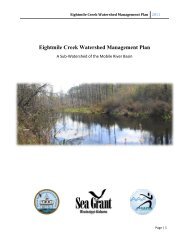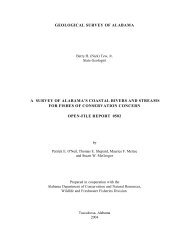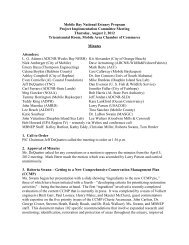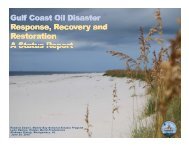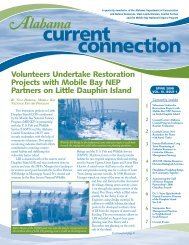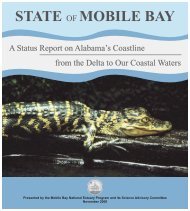Wolf Bay Plan Final - Mobile Bay National Estuary Program
Wolf Bay Plan Final - Mobile Bay National Estuary Program
Wolf Bay Plan Final - Mobile Bay National Estuary Program
- No tags were found...
Create successful ePaper yourself
Turn your PDF publications into a flip-book with our unique Google optimized e-Paper software.
H. HYDROLOGYBaldwin County is dependent upon groundwater for its water needs. Groundwater is water thatsinks through the soil and is stored in underground reservoirs called aquifers. Aquifers are thelayers of underground substrate (limerock and sand) that contain the water and are capable ofproducing water from a well.The aquifer in the <strong>Wolf</strong> <strong>Bay</strong> watershed is the Miocene/Pliocene Aquifer, which is comprised ofover 500 feet of inter-layered sands, gravels and clays. Aquifers are recharged or replenishednaturally by precipitation, which percolates downward through soil and rock in what is called arecharge area. The recharge process is quite slow compared to the replenishment of surfacewater. Baldwin County is unique because the entire county serves as its recharge area.Groundwater also discharges to surface water and provides a high percentage of the base flow tostreams and creeks. Natural areas, like wetlands, are critical areas to protect for groundwaterrecharge.Residents in the <strong>Wolf</strong> <strong>Bay</strong> watershed obtain their water from either public water supply wells orprivate residential wells. Based on the 2000 ADEM and GSA document “Hydrogeology andVulnerability to Contamination of Major Aquifers in Alabama: Area 13” there are 11 publicwater supply wells located in the <strong>Wolf</strong> <strong>Bay</strong> watershed project area. One is owned by the Town ofElberta; three are owned by Riviera Utilities (Foley); four are owned by Gulf Shores, and threeare owned by Orange Beach. However, efforts have been made by local utilities to build morewells. Foley and Riviera Utilities have bought 484 acres on Graham creek to construct additionaldrinking wells.There are approximately 7,484 acres of designated Wellhead Protection Areas within the watershedproject boundary. This represents 12% of the total watershed area.Care for our groundwater must be addressed. Withdrawing large quantities of fresh water fordrinking or irrigation uses can lead to groundwater depletion or the intrusion of salt water intoour fresh groundwater supplies. Contamination of our groundwater supplies can lead to thecontamination of our surface water through groundwater discharge. See chart below for areawithdrawal rates. It is important to note individual and drinking water wells are not reflected inthese withdrawal rates. Although we believe a map of the water supply wells would be usefulinformation, the Office of Homeland Security has determined the location of these wells shouldnot be published.20


